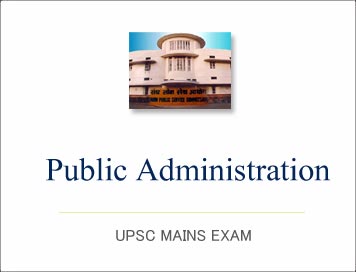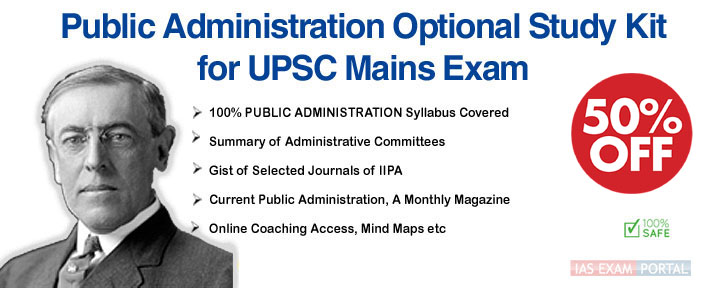
केन्द्रीय सशस्त्र पुलिस बल (सहायक कमांडेंट) : परीक्षा पेपर 2020-सामान्य योग्यता एवं बुद्धिमत्ता
(Download) CAPF (AC) Exam, 2020 Paper "General Ability and Intelligence"
- सामान्य योग्यता एवं बुद्धिमत्ता
- निर्धारित समय : दो घण्टे
- अधिकतम अंक : 250
1. गुरूत्व के प्रभाव के अंतर्गत स्वतंत्र रूप से गिर रहे किसी पिंड के लिए निम्नलिखित कथनों में से कौन सा एक सही है ?
(a) शून्य त्वरण सदैव शून्य वेग को सूचित करता है
(b) शून्य त्वरण का पिंड के वेग के साथ कोई संबंध नहीं है
(c) किसी क्षण में शून्य वेग का अनिवार्य रूप से अर्थ है कि उस क्षण में त्वरण शून्य है
(d) स्वतंत्र रूप से गिरने के दौरान प्रारंभ से अंत तक त्वरण सतत रहता है
2. किसी एक ही स्रोत से उत्पन्न होने वाली दो चुम्बकीय क्षेत्र रेखाएं
(a) कभी भी एक-दूसरे को नहीं काटती हैं
(b) एक ही बिन्दु से आरंभ हो सकती हैं
(c) एक ही बिन्दु पर समाप्त हो सकती हैं
(d) स्थिति अनुसार एक दूसरे को काट सकती हैं
3. फ्लेमिंग के नियम के संदर्भ में, निम्नलिखित कथनों में से कौन सा एक सही है ?
(a) फ्लेमिंग का वाम-हस्त नियम एक चुम्बकीय क्षेत्र में किसी धारावहन चालक पर बल की दिशा को निर्धारित करता है।
(b) फ्लेमिंग का दक्षिण-हस्त नियम एक चुम्बकीय क्षेत्र में किसी धारावहन चालक पर बल की दिशा को निर्धारित करता है
(c) वाम-हस्त और दक्षिण-हस्त नियम दोनों ही, किसी एक चुम्बकीय क्षेत्र में किसी धारावहन चालक पर लगने वाले बल की दिशा का पता लगाने के लिए प्रयुक्त किये जा सकते हैं
(d) फ्लेमिंग के नियम का चुम्बकीय क्षेत्र के साथ कोई संबंध नहीं है
4. गति के संदर्भ में, निम्नलिखित कथनों में से कौन सा एक सही है ?
(a) सभी आवर्ती गतियाँ अनिवार्य रूप से सरल आवर्त (हार्मोनिक) होती हैं
(b) सभी सरल आवर्त गतियां अनिवार्य रूप से आवर्ती गतियां होती हैं
(c) सरल आवर्त गतियों और गति की आवर्तिता के बीच कोई सह-संबंध नहीं
(d) सरल आवर्त गति और आवर्ती गति के बीच संबंध गति कर रहे पिंड के द्रव्यमान पर निर्भर करता है
5. गति सीमा से अधिक रफ्तार (ओवर स्पीडिंग) वाले वाहनों की रोकथाम के लिए पुलिस द्वारा प्रयुक्त रेडार, किस सिद्धांत पर कार्य करता है ?
(a) रमन प्रभाव
(b) प्रेरण प्रभाव
(c) डॉपलर प्रभाव
(d) कूलंब प्रभाव
6. न्यूटन के गति के तीसरे नियम के संदर्भ में, निम्नलिखित कथनों में से कौन सा एक सही नहीं है ?
(a) प्रकृति में कोई भी बल कभी भी एकल रूप से प्रभावी नहीं होता है
(b) जब गुरुत्व के कारण पृथ्वी किसी पत्थर को नीचे की ओर खींचती है, तो पत्थर भी पृथ्वी पर एक बल डालता है .
(c) तीसरे नियम में एक कार्य-कारण संबंध अंतर्निहित है
(d) तीसरे नियम में कोई कार्य-कारण संबंध अंतर्निहित नहीं है
7. मैग्नीशियम का उपयोग किस में होता है ?
(a) आतिशबाजी में एक चमकीला सफेद प्रकाश प्राप्त करने के लिए
(b) आभूषणों के मणि (रत्नों) में
(c) रोगी की आहार नाल के परीक्षण में
(d) जल के शुद्धिकरण में
8. निम्नलिखित घटकों में से कौन सा एक पेंट (प्रलेप) में नहीं होता है ?
(a) तारपीन तेल (थिनर)
(b) पॉली-हाइड्रॉक्सी फ़ीनॉल (एंटि-स्किनिंग एजेंट)
(c) थायोयूरिया (त्वरक)
(d) टाइटैनियम डाइऑक्साइड (वर्णक)
9. क्षारीय मृदा धातुओं के संदर्भ में, निम्नलिखित कथनों में से कौन सा एक सही नहीं है ?
(a) स्ट्रांशियम लवण दहन पर लाल ज्वाला उत्पन्न करते हैं
(b) चिकित्सा में x-किरणों द्वारा किसी रोगी की आहार नाल की जांच के लिए बेरियम धातु का उपयोग होता है
(c) प्रकाश-संश्लेषण में सूर्य के प्रकाश से ऊर्जा ग्रहण करने के लिए पर्णहरित के निर्माण हेतु हरे पादपों को मैग्नीशियम की आवश्यकता होती है
(d) रूबी रत्न का लाल रंग इसमें उपस्थित बेरिलियम तत्व के कारण होता है
10. निम्नलिखित गैसों में से किस गैस में से विद्युत प्रवाहित करने पर लाल प्रकाश उत्पन्न होता
(a) हीलियम
(b) ऑर्गन
(c) नाइट्रोजन
(d) निऑन
11. जल की स्थायी कठोरता (हार्डनेस) को दूर करने के लिए, निम्नलिखित विधियों में से कौन सी एक उपयोग में लायी जा सकती है ?
(a) क्वथन (उबालना)
(b) आयन-विनिमय
(c) चूना उपचार (लाइम ट्रीटमेंट)
(d) बुबुदाती सल्फर डाइऑक्साइड गैस
12. निम्नलिखित में से कौन सा एक प्रकाश रसायनिक धूम-कोहरा (फोटोकेमिकल स्मॉग) का एक घटक नहीं है ?
(a) ओज़ोन
(b) परॉक्सीऐसीटिल नाइट्रेट
(c) पॉलीऐरोमैटिक हाइड्रोकार्बन
(d) नाइट्रिक ऑक्साइड
13. यूकैरियोटिक क्रोमेटिन, किससे बना होता हैं
(a) केवल DNA
(b) DNA और प्रोटीन
(c) DNA और RNA
(d) RNA और प्रोटीन
14. निम्नलिखित में से कौन से एक संघ (फ़ाइलम) में आप द्विपार्श्व सममित और त्रिकोरिकी (ट्रिप्लोब्लास्टिक) काय वाले ऐसे जन्तु को रखेंगे जिसमें वास्तविक आंतरिक गुहिका अनुपस्थित है ?
(a) पोरिफेरा
(b) प्लेटीहेल्मिन्थीज
(c) नाइडेरिया
(d) एनेलिडा
15. मनुष्यों में श्वसन के समय गैसीय विनिमय का वास्तविक स्थान है
(a) श्वसनी (ब्रोंकाई)
(b) नासा पथ (नेजल पैसेज)
(c) कूपिका (ऐल्वीओली)
(d) श्वासनली (ट्रेकिआ)
16. मानव शरीर में, वह हार्मोन कौन सा है जो रक्त में स्रावित (निस्सारित) होता है एवं हृदयस्पंद की दर को नियंत्रित करता है ?
(a) ऐड्रिनलीन
(b) थायरोक्सिन
(c) इंसुलिन
(d) टेस्टोस्टेरोन
17. मानवों में, कुछ रसायन जो तंत्रिका कोशिकाओं के बीच अंतर्ग्रथन (सिनेप्स) को पार कर लेते हैं, कहां से मोचित होते हैं ?
(a) तंत्रिका कोशिका की कोशिका-काय (सैल बॉडी)
(b) तंत्रिका कोशिका का केन्द्रक
(c) तंत्रिका कोशिका के तंत्रिका सिरे (नर्व एंडिंग)
(d) तंत्रिका कोशिका का तंत्रिकाक्ष (ऐक्सॉन)
18. निम्नलिखित में से कौन सा एक पट्टिकाणु (प्लेटलेट) का प्रमुख कार्य है ?
(a) रक्त का स्कंदन
(b) O2 अभिगमन
(c) प्रतिरक्षा
(d) भक्षकाणुक्रिया
19. एक इलेक्ट्रॉन और एक फ़ोटॉन की समान डी ब्रोग्ली तंरगदैर्घ्य होती है। इसका आशय है कि उनमें निम्नलिखित समानता है
(a) रेखीय संवेग
(b) ऊर्जा
(c) चाल/रफ्तार
(d) कोणीय संवेग










